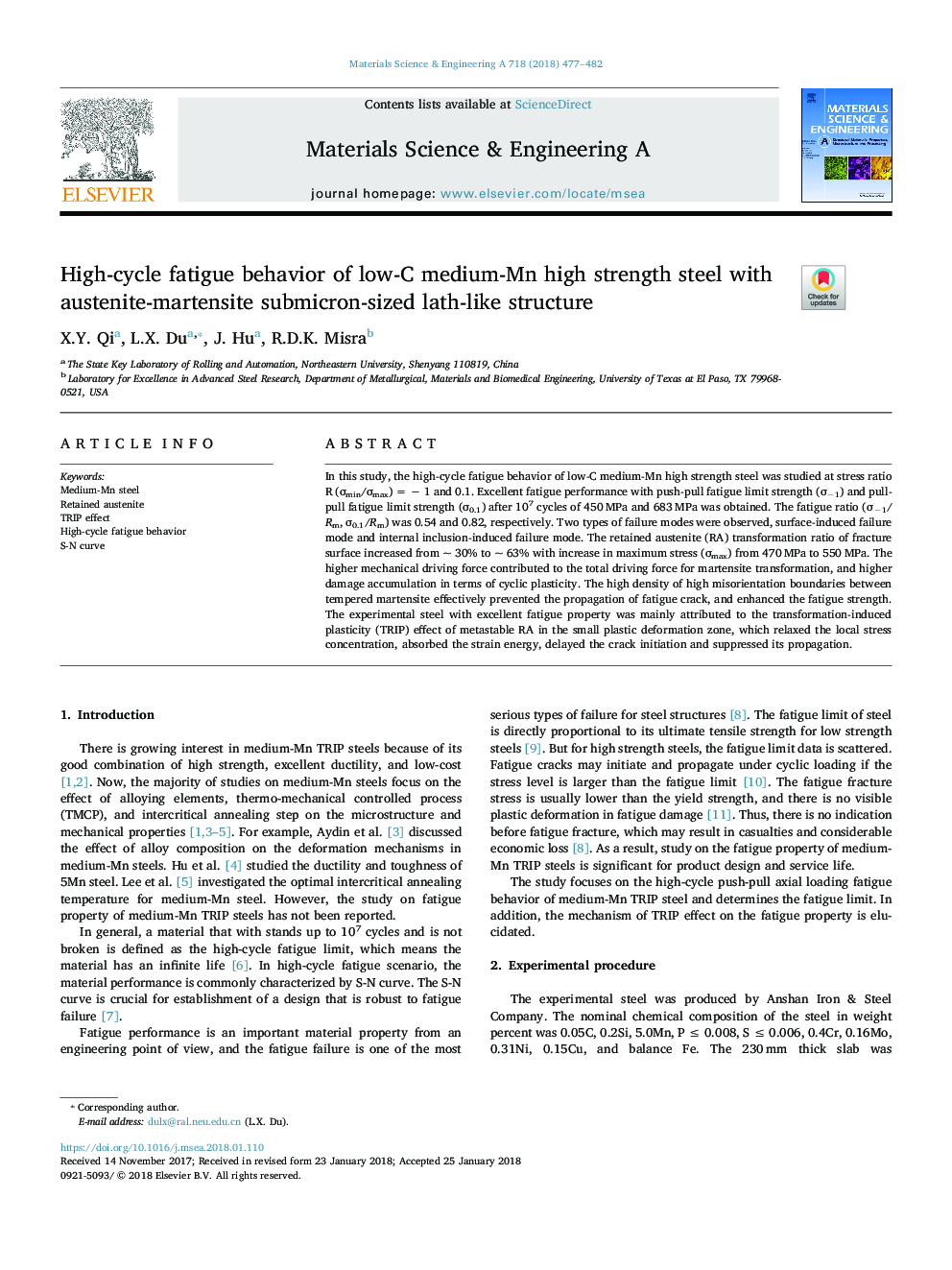| Article ID | Journal | Published Year | Pages | File Type |
|---|---|---|---|---|
| 7973306 | Materials Science and Engineering: A | 2018 | 6 Pages |
Abstract
In this study, the high-cycle fatigue behavior of low-C medium-Mn high strength steel was studied at stress ratio R (Ïmin/Ïmax) = â 1 and 0.1. Excellent fatigue performance with push-pull fatigue limit strength (Ïâ1) and pull-pull fatigue limit strength (Ï0.1) after 107 cycles of 450â¯MPa and 683â¯MPa was obtained. The fatigue ratio (Ïâ1/Rm, Ï0.1/Rm) was 0.54 and 0.82, respectively. Two types of failure modes were observed, surface-induced failure mode and internal inclusion-induced failure mode. The retained austenite (RA) transformation ratio of fracture surface increased from ~ 30% to ~ 63% with increase in maximum stress (Ïmax) from 470â¯MPa to 550â¯MPa. The higher mechanical driving force contributed to the total driving force for martensite transformation, and higher damage accumulation in terms of cyclic plasticity. The high density of high misorientation boundaries between tempered martensite effectively prevented the propagation of fatigue crack, and enhanced the fatigue strength. The experimental steel with excellent fatigue property was mainly attributed to the transformation-induced plasticity (TRIP) effect of metastable RA in the small plastic deformation zone, which relaxed the local stress concentration, absorbed the strain energy, delayed the crack initiation and suppressed its propagation.
Related Topics
Physical Sciences and Engineering
Materials Science
Materials Science (General)
Authors
X.Y. Qi, L.X. Du, J. Hu, R.D.K. Misra,
